This post was sponsored by Boulder Canyon. All opinions are my own.
Getting our families outside has never been more important. Follow these simple tips to help you enjoy the outdoors and reap the physical, mental, and emotional benefits of the great outdoors!
 Tips for Getting Your Family Outside
Tips for Getting Your Family Outside
The past few years, our family has made it a goal to spend more time outdoors enjoying nature. It’s a proven fact that spending time in nature can improve your mood and your overall physical health. But getting the whole family outside can be tough sometimes. I’m sharing a few tips to help you get out the door and enjoy it too!
How much outside time are our kids getting?
A recent UK study commissioned by the National Trust found that children spend half the time playing outside than their parents did. The study found that kids were playing outside just FOUR hours a week! That’s only 34 minutes per day!
I think perhaps the saddest part of this study was that some kids had not been in a natural environment like a forest, beach, or park for over a year!
Another study by the Seattle Children’s Research Institute found that on average, children aged 10 to 16 spend only 12.6 minutes a day participating in vigorous outdoor activity compared with 10.4 waking hours being relatively motionless.
“If we want children to flourish, to become truly empowered, then let us allow them to love the earth before we ask them to save it”
-David Sobel
Why is this happening?
I don’t know about you, but when I was young, I spent most of my waking hours outdoors and had to be called in for dinner. Maybe it was the lack of television, technology, video games, and toys, or maybe it was the lack of supervision that the 80s provided, but playing outside was not only a priority but a necessary cure to boredom.
I believe there are three factors causing this epidemic of sedentary indoor kids.
 1. Nowhere to play
1. Nowhere to play
An obvious major hurdle for parents and children is that there are simply fewer places to play and be free outdoors. Many families live in cities and apartment buildings without easy access to natural spaces. Increasing land prices mean that even families with houses have more house and less yard.
“Prize the natural spaces and shorelines most of all, because once they’re gone, with rare exceptions they’re gone forever. In our bones we need the natural curves of hills, the scent of chaparral, the whisper of pines, the possibility of wildness. We require these patches of nature for our mental health and our spiritual resilience.”
― Richard Louv
2. Media-Driven Fear
With constant access to the news, we are bombarded with all the bad things happening in the world in the palm of our hand. How can we, as parents, not be terrified to let our kids out of the house! What if they get kidnapped, what if they get hit by a car, what if they break a bone…the what-ifs are real, and we are seeing them every day.
According to research, 50% of parents let “fear of strangers” prevent them from allowing their children to play outside. However, crime statistics show that kidnappings and crime are not on the rise at all. Of course, we need to be careful and aware, but at the same time not let fear stop us from letting our children have a childhood that involves the outdoors.
Being indoors can also be detrimental to our children’s health as well and not just from an overconsumption of technology. The Environmental Protection Agency actually warms that indoor air pollution is the nation’s number one environmental health threat. It’s from 2-10 times WORSE than outdoor air pollution! Indoors, children are more susceptible to toxic molds in walls and rugs, or bacteria carried by household rodents, or carbon monoxide, radon, and lead dust! And the allergen level of new buildings can be 200 times greater than that of older buildings.
Nature can be healing, not only for our souls, but also for our bodies!
“A generation of children is not only being raised indoors but is being confined to even smaller spaces. Jane Clark, a University of Maryland professor of kinesiology . . . calls them “containerized kids”–they spend more and more time in car seats, high chairs, and even baby seats for watching TV. When small children go outside, they’re often placed in containers–strollers–and pushed by walking or jogging parents. . . Most kid-containerizing is done for safety concerns, but the long-term health of these children is compromised.”
― Richard Louv
3. Access to Technology
Research has shown a contrast between declining visits to National Parks and the increasing consumption of electronic media.
Technology is obviously the biggest culprit of the decline in outdoor time. Our kids are being given endless options when it comes to entertainment. Computers, tablets, smartphones, and gaming consoles have become the new sticks, swings, slides, and mud pies. It’s hard to compete with all the fun and entertainment that technology provides. It is also being promoted under the guise of educational, assuaging parents’ guilt for allowing more screen time (yours truly included).
There is some amazing technology out there and it is definitely the way of the future. Our kids need to learn how to navigate and master these devices if they want to remain relevant in this technology-based world, but we need to do it without robbing them of a childhood filled with a healthy dose of play!
 Why do we need to make the outdoors a priority?
Why do we need to make the outdoors a priority?
“Teaching children about the natural world should be treated as one of the most important events in their lives.”
– Thomas Berry
In his book, Last Child In the Woods: Saving Our Children from Nature Deficit Disorder , Richard Louv coins the term “Nature Deficit Disorder.” Nature Deficit Disorder is the idea that children (and adults as well) are spending less time out in nature and the belief that this results in a wide range of behavioral problems. Louv says, “nature deficit disorder is not meant to be a medical diagnosis but rather to serve as a description of the human costs of alienation from the natural world.”
Outdoor play isn’t just nice to have, it’s a necessity for our children’s health. There have been many studies that show real physical and emotional benefits to spending time outdoors, including:
- Increased Vitamin D levels
- Development of fine and gross motor skills
- Exposure to the sun can help eyesight
- Increased endorphins from physical activity outdoors
- Encourages independence
- Understanding risks
- Increased appreciation for and understanding of nature and the environment
- Encourages a more active lifestyle
- Increased creativity through the use of imagination
Personally, my kids are always happier and healthier when they get sufficient time to play outdoors and breathe fresh air.
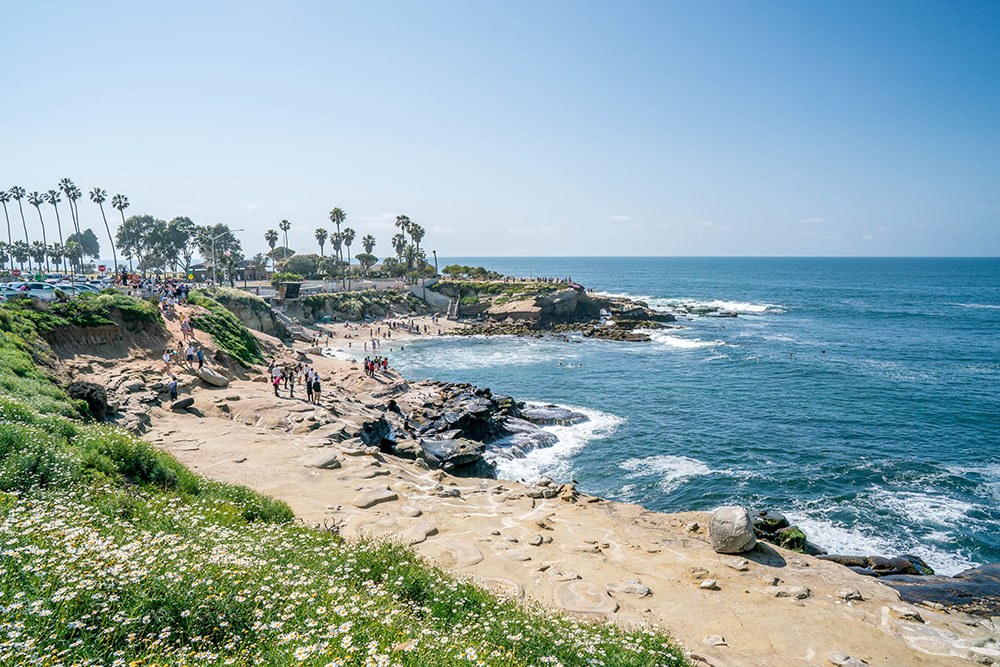
I know it can be really difficult to get outdoors when the weather isn’t great, so I’m sharing some of my best tips that we use to get outdoors in inclement weather.
 1. Have the Right Gear
1. Have the Right Gear
Probably the number one reason we don’t want to go out is our comfort. No one loves being extremely cold or hot. I’m sure you’ve heard the saying “There’s no such thing as bad weather, only bad clothes.” In fact, I read a book this winter called There’s No Such Thing As Bad Weather by Linda Akeson McGurk.
In the book, Linda discusses the way that she was raised in Sweden, where spending time outdoors is perhaps more difficult than many places in the world, and how we can adopt some of those practices in the US. Her most important recommendation was to have the proper gear.
It’s so important to get everyone out with the proper gear. This is especially important in the winter. Be sure you have these things handy for cold weather:
- Base layer
- High-Quality Waterproof Coat
- Waterproof Gloves
- A scarf A hat that covers the ears Or, my personal preference, especially for young kids, a Balaclava, which covers the entire head and most of the face, leaving an opening for your eyes, nose, and mouth.
- Waterproof Snowshoes
- A Snow Bib with suspenders and rubber elastic at the bottom to go over boots
- Thick and Comfortable Wool Socks
- Check out this great guide for dressing kids for winter weather
If you’re trying to get outside during the hotter months, which can be equally difficult, be sure to dress properly as well. If you’re going on a hike or spending extended time outdoors in nature be sure to have:
- Good comfortable, outdoor, waterproof shoes.
- Plenty of water
- A good hat for shade
- Sunscreen
 2. Keep the Family Fueled Up
2. Keep the Family Fueled Up
There’s no question that my kids are happier when they’re fed! I think this applies to everyone! Be sure to fuel everyone up with a healthy meal before heading outdoors.
I always like to have snacks on hand while we’re out, especially if we are doing any sort of hike or something away from home. My kids seem to be bottomless pits who would eat all day long if I let them. Having snacks handy means, I have happy kids outdoors!
We love the chips from Boulder Canyon that come in so many different delicious flavors and are cooked in different unique kinds of oils like avocado oil, olive oil, and coconut oil for maximum taste and health.

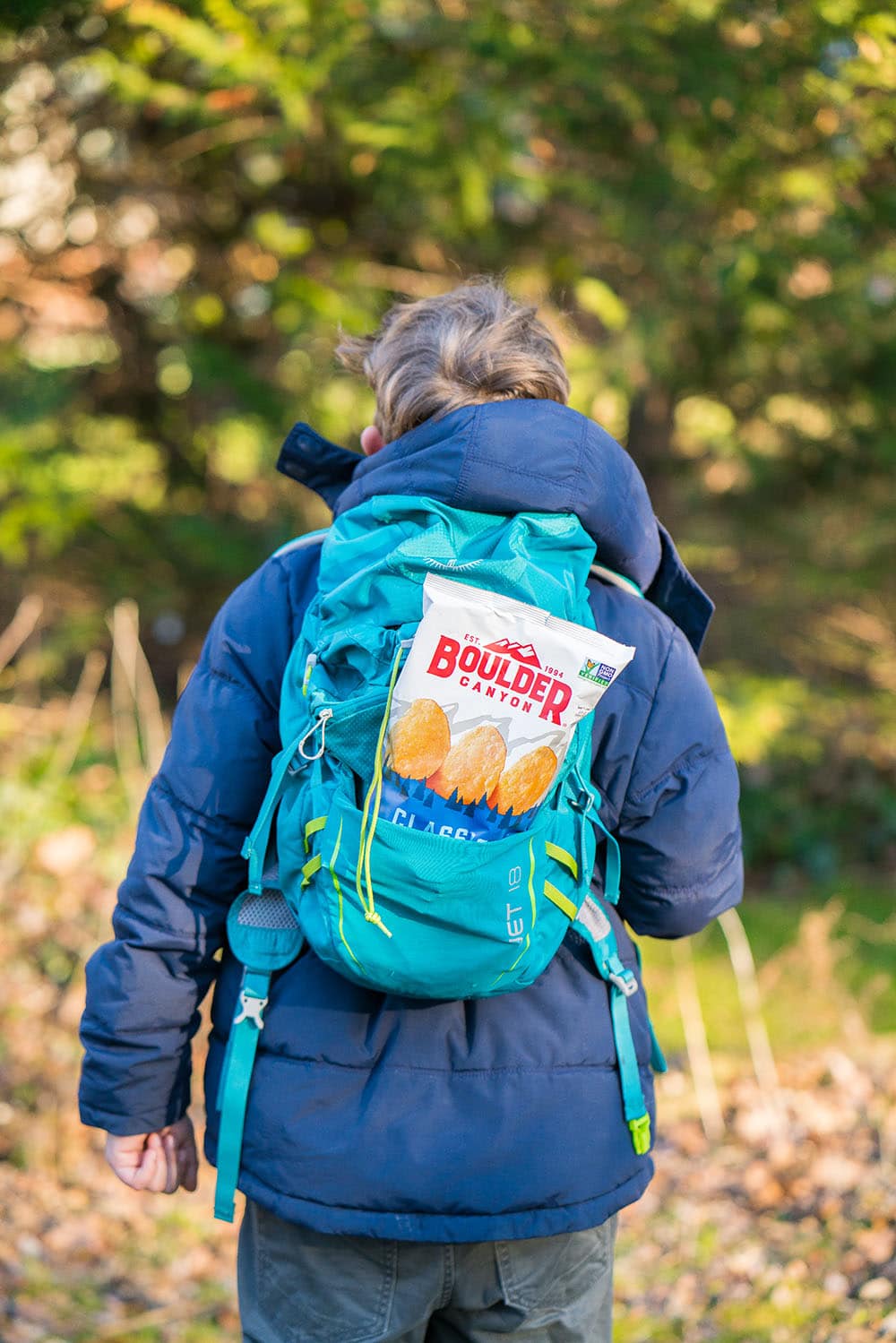
Boulder Canyon recently changed their packaging to celebrate their 25th anniversary but their recipe has remained the same! Be on the lookout for the new bags which are an homage to the brand’s origins in the Flatirons of Colorado.
 3. Go Outside with a Purpose
3. Go Outside with a Purpose
While deciding to get outside more is great, it’s sometimes best to have a plan rather than to wander aimlessly, especially if spending more time outside is new to your family. Have an activity or game planned outside to make being outdoors more fun. If you’re moving and having a good time, you’re less likely to focus on feeling cold, hot, or uncomfortable.
Here are some ideas to get you outdoors and thinking outside the box:
- Go on a nature walk. Encourage the kids to explore nature by touching leaves, rocks, trees, and mud. Use a plant identification app to name the things that you see. You can even take along a nature walk scavenger hunt like this one.
- Have a picnic outside. Set up a large blanket or sheet and bring a simple meal and snacks like Bounder Canyon Chips.
- Try water painting. Bring a bucket of water and some brushes outside and let them paint on the sidewalk or house with water.
- Set up an obstacle course outside. You can even use sticks or anything laying around outside. Doing this also helps teach important concepts like over, under, through, and around.
- Play sports as a family. Soccer is an easy thing to do out in nature.
- Take a new family hobby like fishing or boating.
- Plan an adventure or vacation where you try new outdoor activities. Here’s a great list of the best family vacations to get you started.
- Bubbles are always a good idea!
 4. Get Outside WITH the Kids
4. Get Outside WITH the Kids
I know it can be really tempting to get the kids dressed and send them outside but try to get outdoors with them. You’re sure to have a good time and create some memories as a family. After all, adults can suffer from Nature Deficit Disorder as well. We need to make sure we are taking care of our bodies and minds so that we can better take care of our children.
5. Make a Commitment
It can be tough to get outdoors on bad weather days, whether hot or cold, but make a commitment to leave the house and get fresh air for just 15 minutes a day as a family, even when you don’t feel like it. You’ll probably end up spending more time once you get out!
“What do parents owe their young that is more important than a warm and trusting connection to the Earth…?”
– Theodore Roszak
I hope this has inspired you to spend more time outside as a family. If you have any questions or ideas, I’d love to hear them! Feel free to reach out to me on Facebook or Instagram.
xo
Vanessa
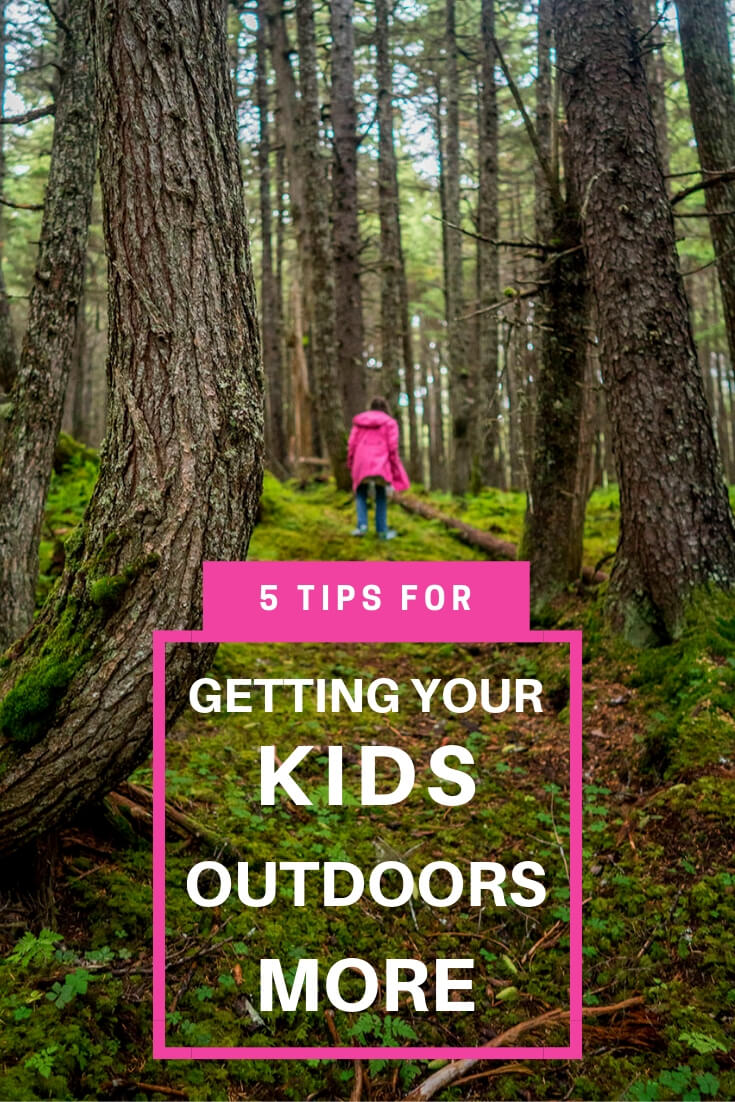

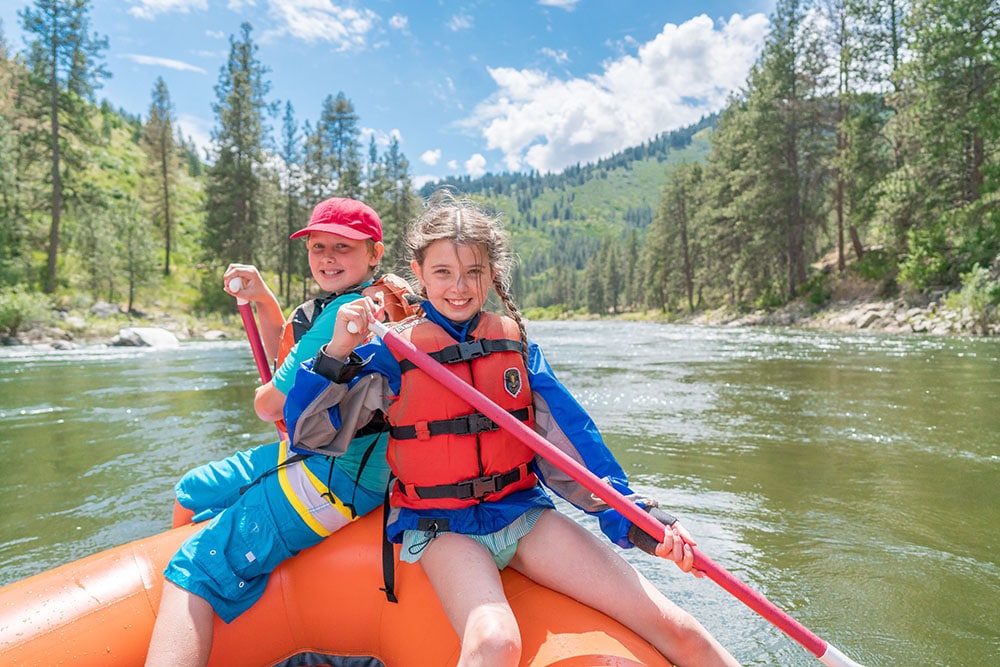
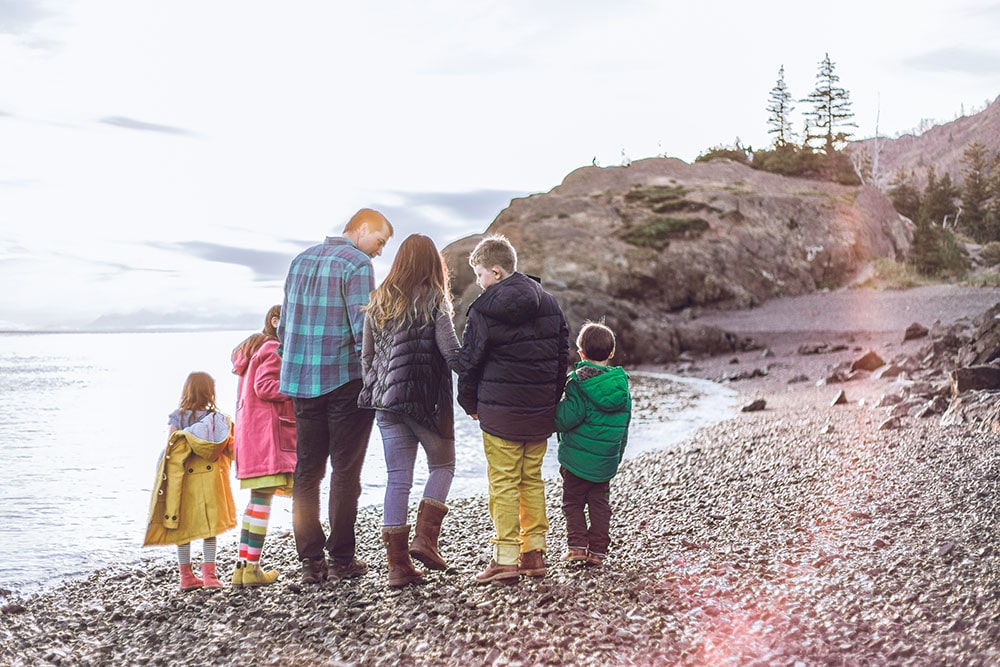 Tips for Getting Your Family Outside
Tips for Getting Your Family Outside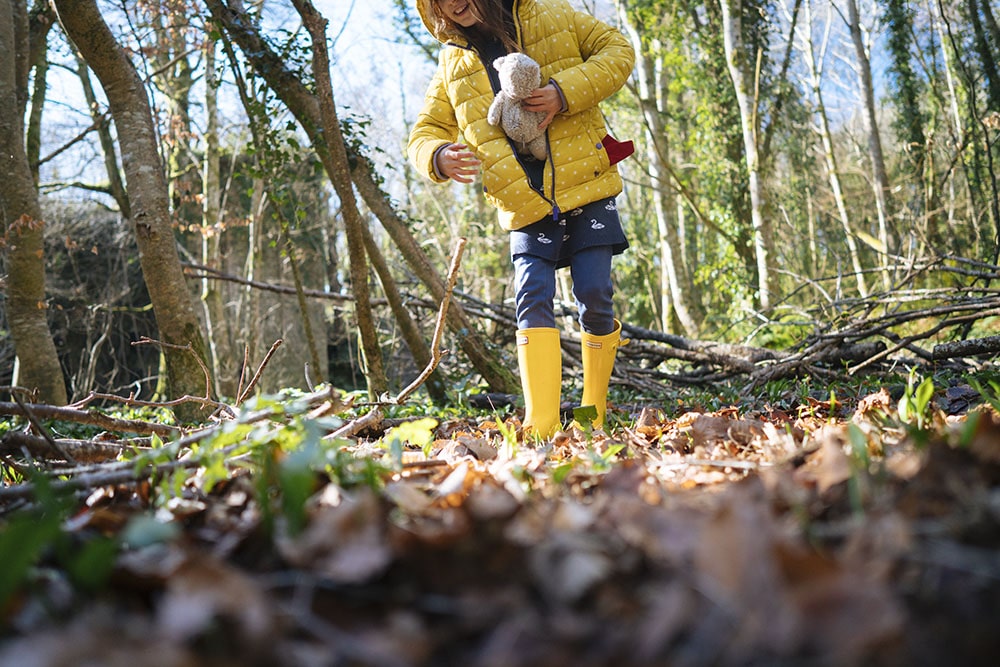 1. Nowhere to play
1. Nowhere to play
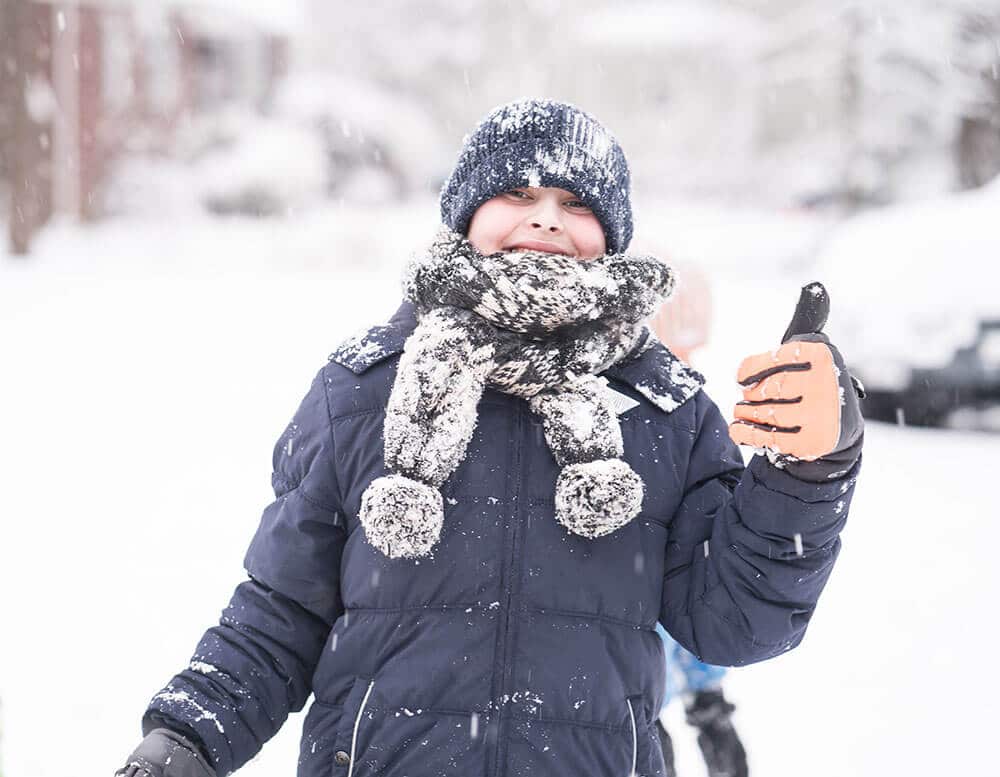 1. Have the Right Gear
1. Have the Right Gear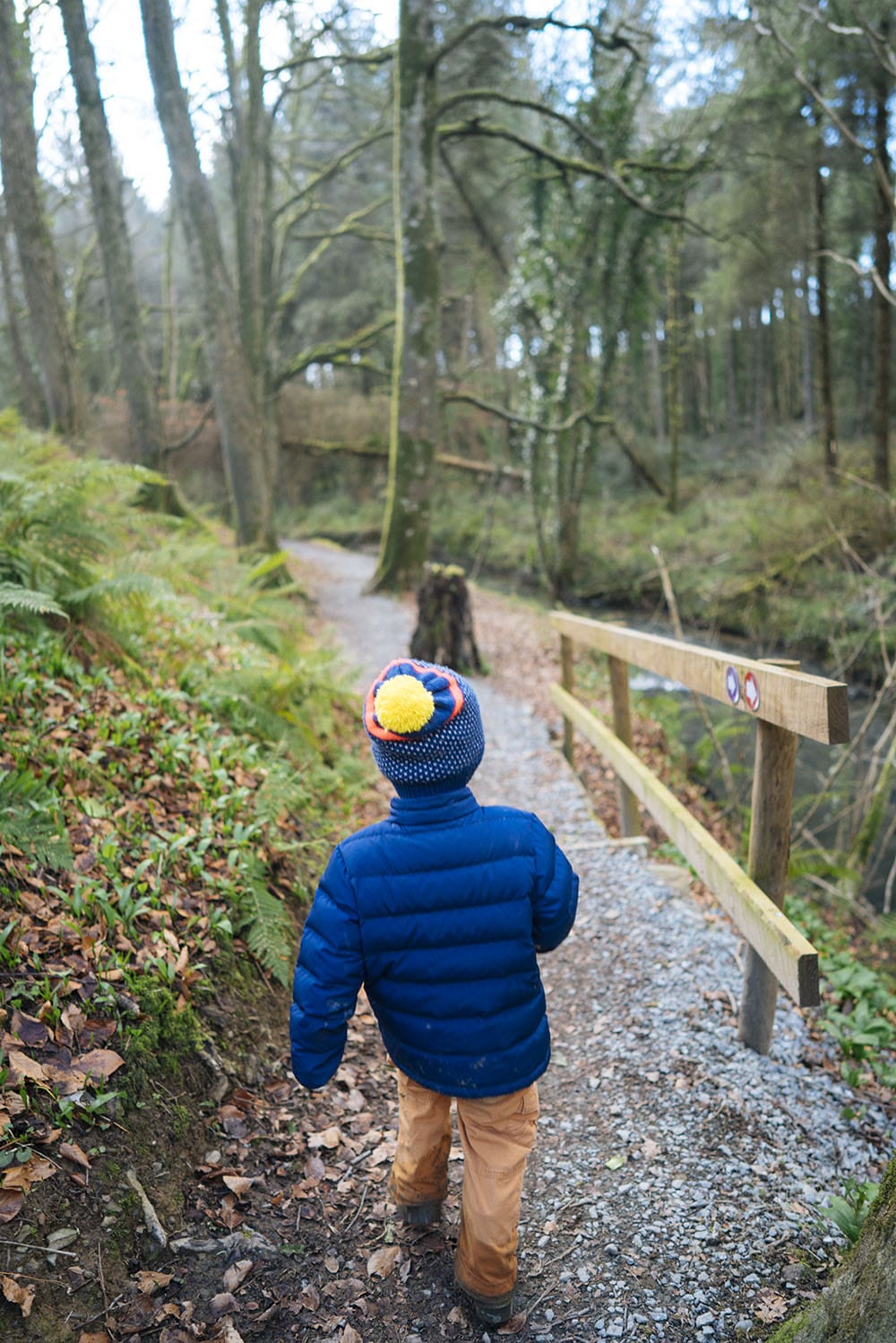
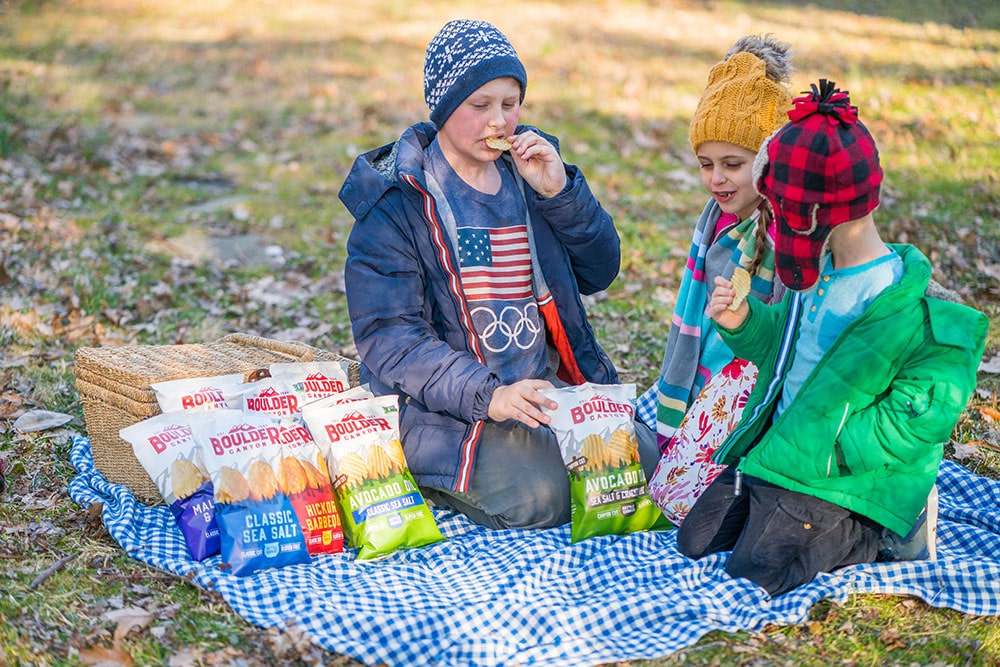 2. Keep the Family Fueled Up
2. Keep the Family Fueled Up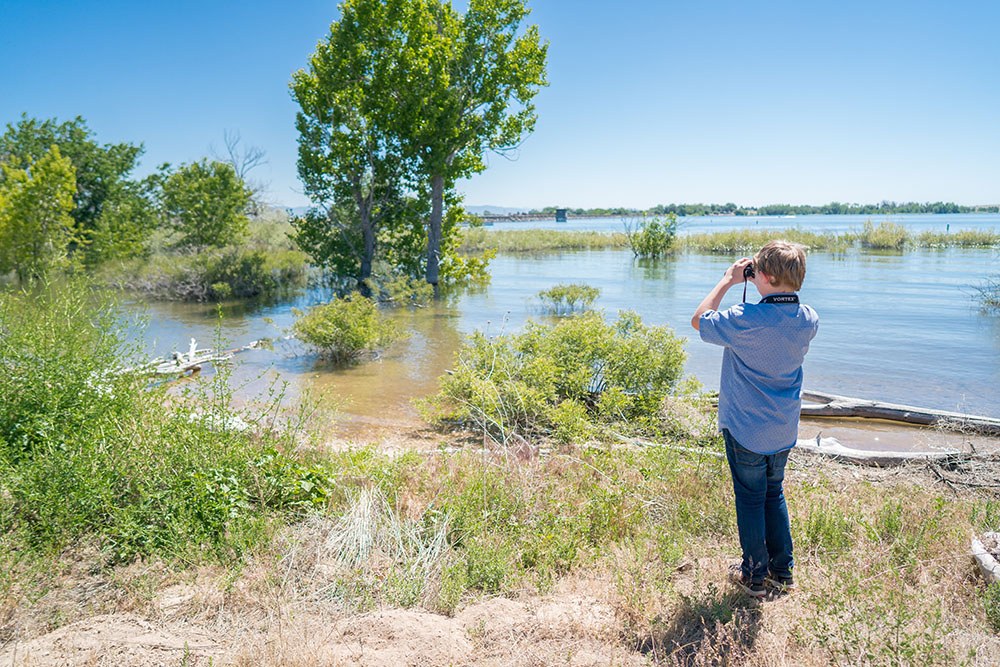 3. Go Outside with a Purpose
3. Go Outside with a Purpose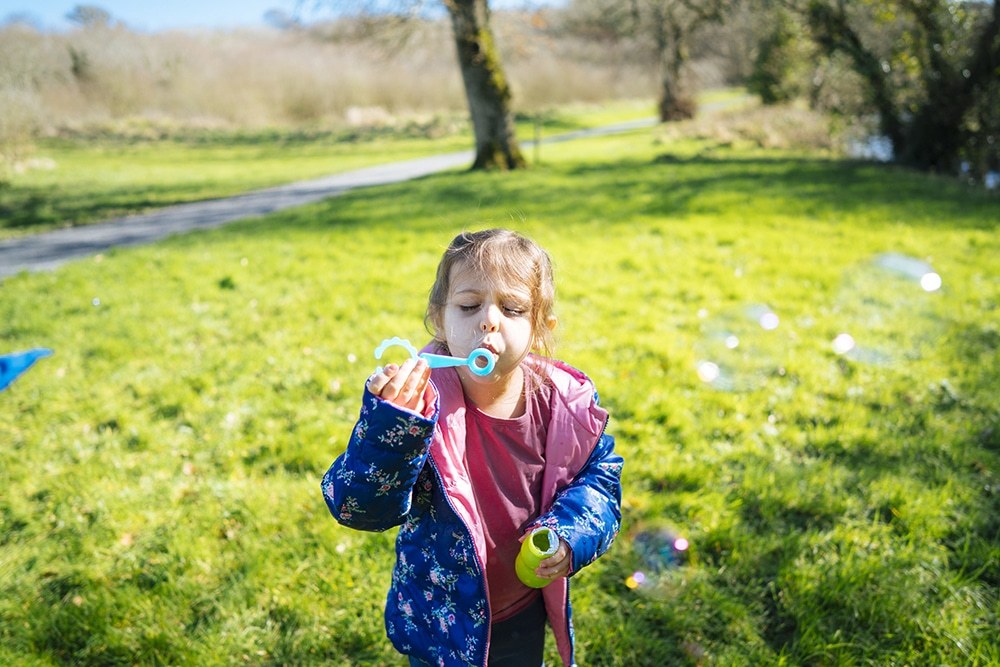 4. Get Outside WITH the Kids
4. Get Outside WITH the Kids
Love this! So many great tips!